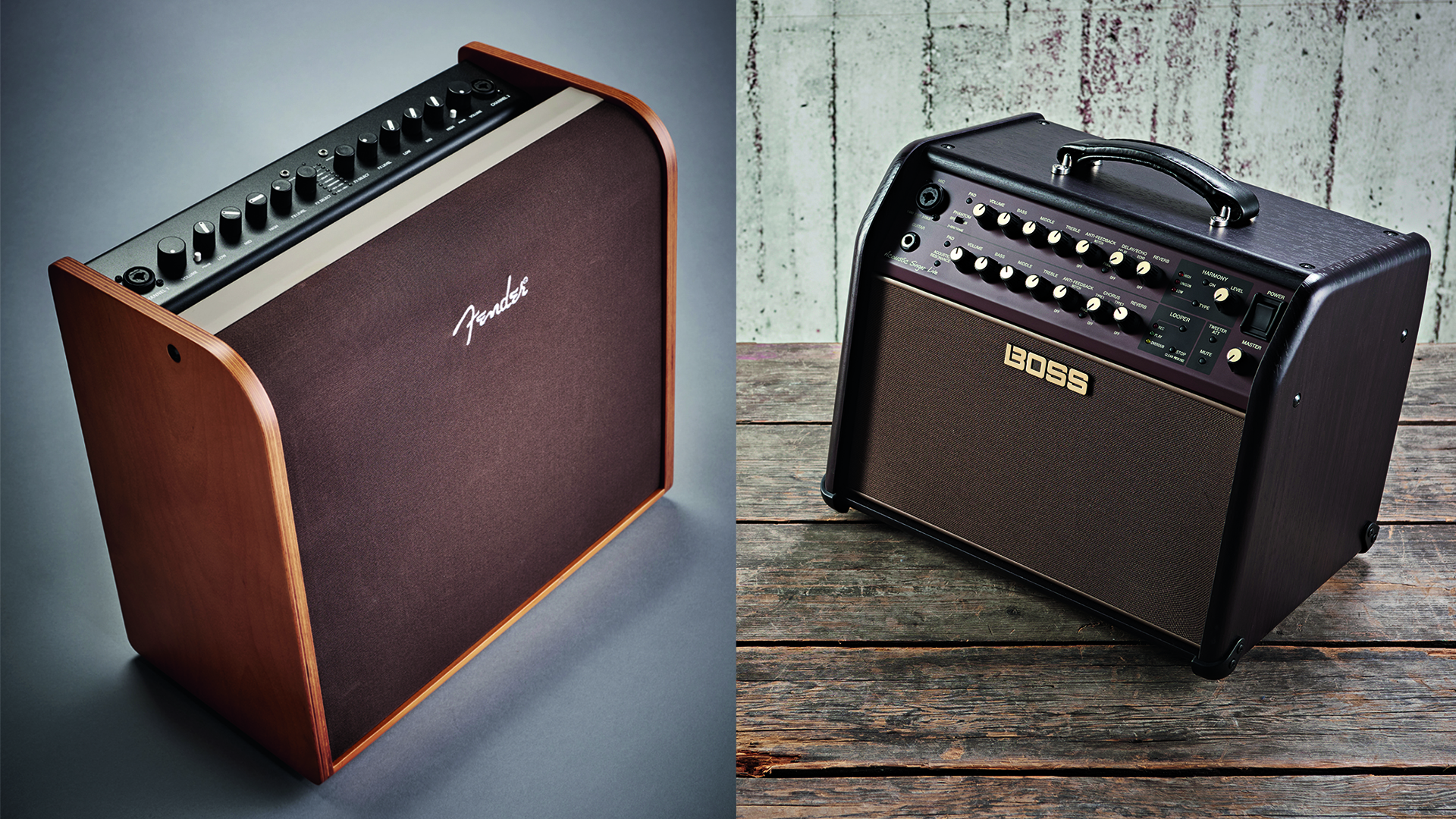“For acoustic guitarists, two pickup signals are better than one.” Getting the best acoustic guitar tone from an amp is within your reach. Try these tips.
If you're using only one channel of your two-channel acoustic amp, you're missing out

If you’re an acoustic guitar player who’s unhappy with your live tone, you might not be getting the most out of your setup. If, like many acoustic performers, you have a dedicated two-channel amp — which is very much the standard today — you may be missing out if you’re using only one of the channels. That second input is a golden opportunity to take your tone to the next level by adding a second pickup signal.
STEP 1: PLUG IN A PIEZO (SIGNAL 1)
While more guitars are starting to incorporate multiple pickups, most acoustic-electrics still come with a single onboard piezo pickup located under the bridge saddle. It may be a dual system that includes a second element such as a microphone, but a built-in preamp generally combines them and sends a summed signal into a single 1/4-inch output jack. For our purposes, plugging that into the first channel is just the first step.
STEP 2: USE THE POWER OF MAGNETISM (SIGNAL 2)
Here we’re adding a magnetic sound hole pickup signal to channel 2. This type of acoustic pickup works exactly like an electric guitar pickup: Magnetic pole pieces pick up string vibrations and convert the energy into electricity that we hear in the form of amplified notes.
The Sunrise pickup is one of the most coveted of these. Leo Kottke once told me, “It’s the only thing that gives you the goddamned note.” Actually, any magnetic pickup will focus more on the strings and deliver a faster attack than a piezo pickup, which must wait for that energy to transmit down the string and into the bridge, where piezoelectric crystals or ceramic elements detect vibrations. It stands to reason that the piezo pickup gathers more overall information from the guitar top, while the magnetic pulls the lion’s share of the string sound. So why not use both?

STEP 3: TWO IS BETTER THAN ONE
All the latest guitar news, interviews, lessons, reviews, deals and more, direct to your inbox!
In my setup, I usually use channel 1 for the onboard piezo signal and boost the bass a bit for a bodacious body-driven tone, while channel 2 delivers the string tone from the sound hole pickup. The piezo provides plenty of high-end detail as well. I sometimes cut the mids a bit to make room for the naturally midrange magnetic tone. Once you’ve got both signals happening, you can find the ultimate balance between them.
But a word of warning: Once you do this, you’ll never again be as happy with the sound of either pickup on its own. And you’ll begin to understand why a player like Mike Dawes, who blends modern percussive techniques with fingerpicking and uses traditional electric guitar effects such as overdrive and octave processing needs multiple signals to gather all that information for amplification.
OPTIONS
There are tons of variations on this theme. If you’ve mainly been using a magnetic pickup, add a piezo. And if you can’t get past the piezo “quack,” try a soundboard-sensor-style pickup, such as the L.R. Baggs HiFi. If the somewhat dull sound of an old-fashioned, inexpensive magnetic pickup doesn’t turn you on, audition a tonally flexible active one like the Seymour Duncan Active Mag. Baggs’ modern magnetics, such as the M-80, are designed to pick up body vibrations along with the strings, which can eliminate the need for additional soundboard sensors or a mic.
Permanent installation may require additional technical expertise and perhaps some modification, such as an extra output jack or a signal-splitting stereo output jack. In addition, pedals such as Fishman’s AFX Pocket Blender can help separate and mix signals before they enter an amplifier. And if you need channel 2 for vocals, an auxiliary input or effects loop return can often accommodate a second guitar signal.
The possibilities are practically endless, but in the end, two pickup signals are better than one, and having two different kinds on two independent channels for blending is the bomb.
Jimmy Leslie is the former editor of Gig magazine and has more than 20 years of experience writing stories and coordinating GP Presents events for Guitar Player including the past decade acting as Frets acoustic editor. He’s worked with myriad guitar greats spanning generations and styles including Carlos Santana, Jack White, Samantha Fish, Leo Kottke, Tommy Emmanuel, Kaki King and Julian Lage. Jimmy has a side hustle serving as soundtrack sensei at the cruising lifestyle publication Latitudes and Attitudes. See Leslie’s many Guitar Player- and Frets-related videos on his YouTube channel, dig his Allman Brothers tribute at allmondbrothers.com, and check out his acoustic/electric modern classic rock artistry at at spirithustler.com. Visit the hub of his many adventures at jimmyleslie.com
